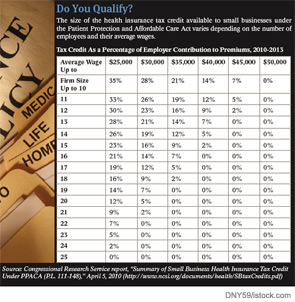By now, you’re probably well versed in the clinical aspects of the health reform bill signed by President Obama in March. But what you may not know is that the bill includes a section that could benefit otolaryngologists and other physicians in their role as employers.
Explore This Issue
July 2010Beginning this tax year, the bill offers small businesses tax credits to purchase health insurance for their employees. But the Patient Protection and Affordable Care Act also includes penalties for businesses that have 50 or more employees and don’t provide coverage.
The tax credit provisions are a positive development for some physician practices, said Allison Brown, a government affairs representative for the Medical Group Management Association (MGMA). “Like an employer in any industry, physicians are more competitive if they’re able to offer health care coverage, and if this helps a business thinking about dropping coverage because of the rise in costs to retain insurance, then it certainly is a benefit,” Brown said.
But there are stipulations. To qualify, businesses must cover at least 50 percent of employees’ premium costs. A credit is only available to employers with fewer than 25 full-time equivalent employees (FTEs) earning average wages of less than $50,000 annually. The maximum credit of 35 percent of employers’ share of premiums is available to businesses with fewer than 10 FTEs with average wages of less than $25,000 a year.
When calculating the number of FTEs, practices can include part-time workers, according to Internal Revenue Service guidance. To determine the number of FTEs, a business must first add up the number of hours for which it pays wages to employees during the year; however, the figure cannot exceed 2,080 hours for any given employee. The total is then divided by 2,080.
The credit is retroactive to January 2010 and lasts in this form through 2013. In 2014 and 2015, the size of the credit jumps to 50 percent of employers’ premium contributions, but, in order to qualify, businesses must purchase coverage through the state health insurance exchanges slated to begin in 2014.
Wage Requirements
Many small physician practices would be eligible for the credit based on number of employees, but the wage restriction could rule out some of them, Brown said. Although physician owners’ salaries aren’t factored into the average wage calculation, employed physicians’ salaries are. Employed doctors make well above $50,000 a year and could put average employee wages above that mark, Brown says. In addition, doctors often employ highly trained staff, such as nurse practitioners, whose earnings are frequently above the law’s limit.

Leave a Reply